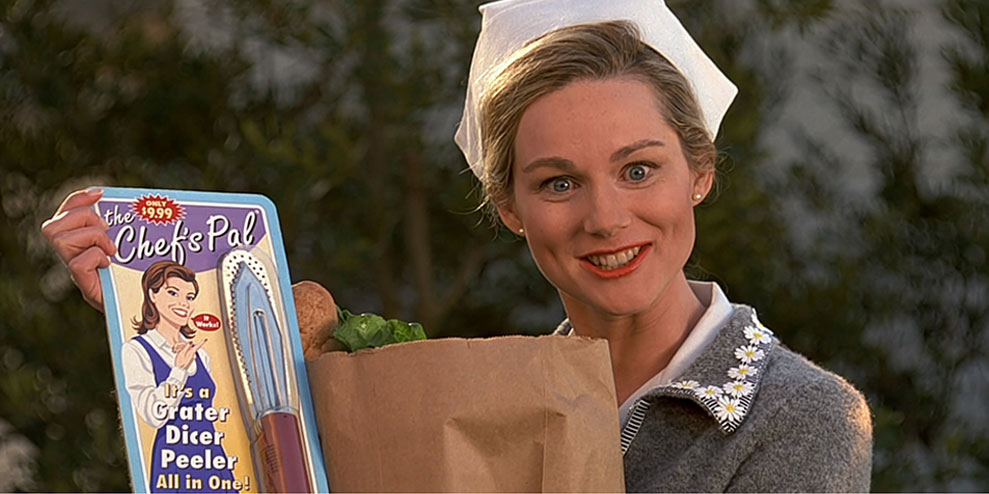Is the world of advertising about to come full circle, Faris Yakob wonders?
The period known as the ‘golden age of advertising’ starts at the creative revolution in the 1960s and runs through the end of the 1980s. During this time, and possibly even until now, if you asked the average individual to think of advertising, they tended to think of television commercials. We know this because in research, consumers tended, and still tend, to significantly over-attribute any advertising to that medium. Print and posters are glorious juxtapositions of art and copy, but it is the thirty second spot that every creative seems to aspire to work on. That is advertising your mum will see.
Today, we live in what is generally recognized as the ‘golden age of television’, or ‘Peak TV’ (to distinguish it from the prior gilded age in the 50s). However, if you are watching many of the marquee programs that are making cultural waves on their native platforms, you won’t be seeing any ads.
Before there is an immediate uproar, yes people still watch plenty of commercial television, especially in the USA. However, at least 14 million homes have cut the cord entirely and many more have access to one or more subscription services. Total media consumption time has plateaued. People are watching [and talking about]Netflix, and, according to UK regulator Ofcom, children are more aware of the existence of Netflix than the entire BBC. Consumers who skew more educated and affluent are more likely to be watching on-demand subscription services. This is why Scott Galloway says that “advertising will become a tax only the poor will pay”.
We are only at the beginning of ‘over-the-top-TV’ (in both senses). Significantly more growth is expected, which is reflected in Netflix’s share price. There are a number of heavyweights about to enter the market, including Disney+, HBO Max and Apple TV+ (who brands these things?). So, some people, especially affluent ones, are going to be watching more television without advertising and that is likely to grow. Television remains the heavy hitter in cultural impact and nothing online (except perhaps search, which isn’t really advertising) comes close to creating the same commercial impact for brands (it may be a different story for politicians).
All of which leads us to the question, how do brands reach those consumers who only watch commercial-free, television-like content, whilst still leveraging the uniquely powerful combination of semi-focused attention on sight, sound and motion that can stir the heart?
Fear not, for brands, like life, find a way. Companies like Netflix have taken on vast amounts of debt to fund their expansion and as such will need to find alternative revenue streams at some point, especially as competition intensifies. In this, as in so much else, the nascent global content companies look to Hollywood, which long ago realized that it could subsidize the onerous costs of production with product placement. The first movie to win a Best Picture Oscar in 1927 was a silent film called Wings that featured a prominently placed bar of Hershey’s chocolate. Product placement is considered “integral to the Bond formula” and the last movie had its twelve ‘partners’ featured prominently on the official website. As Daniel Craig said, “The simple fact is that, without [product placement], we couldn’t do it. It’s unfortunate but that’s how it is.”
As with everything in the advertising industry, that which is old becomes new again, in twisted McLuhan-esque ways, when new platforms emerge. Stranger Things is the most popular streaming series in the world (Parrott Analytics) and classic 80s brands were particularly evident in Season Three. Netflix didn’t get paid for it directly in this case (although it has taken some paid placements) but brands like Coca-Cola that featured prominently throughout spent a lot of money on co-promotion, which is often part of these deals (Reese’s Pieces’ famous appearance in E.T. worked the same way). Regardless, the impact on the consumer is irrespective of how something is paid for.
My wife Rosie worked for entertainment branding company Translation. She related the tale that founder Steve Stoute would tell of the agency’s genesis. He was working with Will Smith on Men in Black and discovered that Smith made far more money from the Ray Ban partnership than he did from the chart topping single from the soundtrack; this led him to approach Jay-Z with the idea of forming an agency to broker such deals. As more affluent consumer viewing time is spent on subscription platforms, we will see more of these sort of deals and deeper product integrations. Diageo released a number of Game of Thrones whiskeys and Bollinger has already announced two limited-edition champagnes to coincide with the next Bond film.
Taken to a logical extension his might lead to brands stumping up the money for entire shows, which brings us full circle back to the origins of television. Before the invention of spot advertising, shows were made by advertisers. Most famously, P&G created soap operas to sell detergents to housewives (hence the name) and liberally placed their products in them so this golden age might end up looking like the first one.
–
This article first appeared in www.warc.com
Seeking to build and grow your brand using the force of consumer insight, strategic foresight, creative disruption and technology prowess? Talk to us at +9714 3867728 or mail: info@groupisd.com or visit www.groupisd.com

